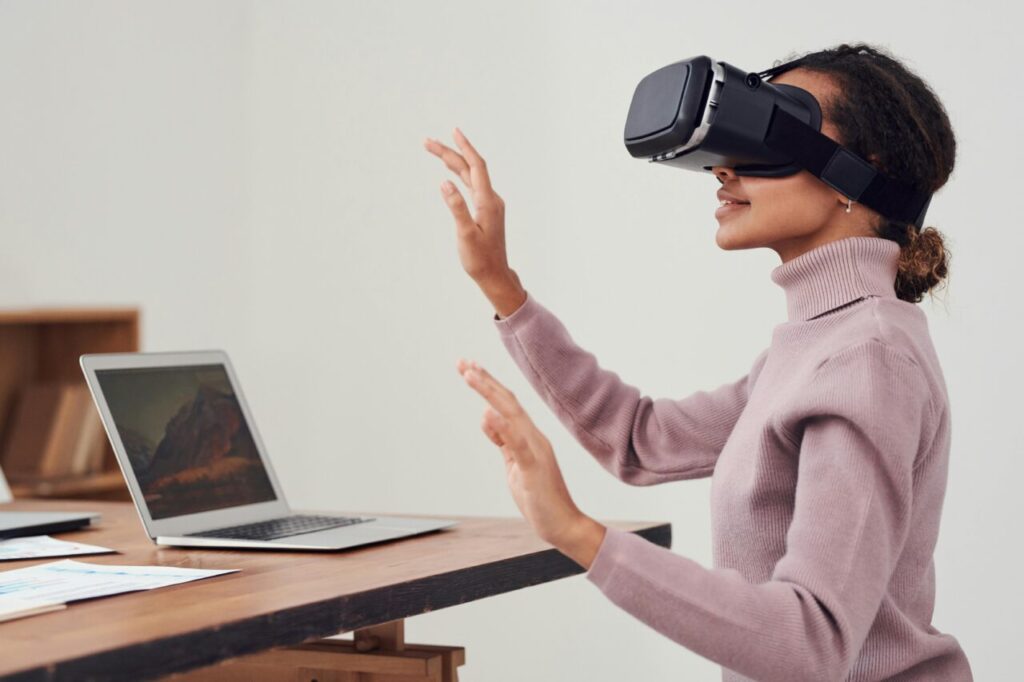Remember those sci-fi movies where people would step into a new world with just a headset? Well, what once seemed like pure fantasy is quickly becoming a powerful tool in our real-world fight for mental well-being. I mean, who would’ve thought that the same technology that lets us play incredibly immersive games could also help someone overcome a debilitating phobia or manage chronic anxiety? It’s genuinely exciting to see how far we’ve come, especially in the realm of Remote Mental Health Therapy via VR. This isn’t just about convenience; it’s about pioneering new ways to connect with care, offering experiences that traditional therapy, while invaluable, simply can’t replicate. We’re on the cusp of a significant shift, and the implications for both individuals and businesses are profound.

Bridging Gaps and Enhancing Accessibility with VR
For far too long, accessing quality mental health care has been a challenge for many. Geographical barriers, the stigma associated with visiting a therapist’s office, or simply the long wait times have left countless individuals feeling isolated and without support. This is where virtual reality steps in, offering a genuinely groundbreaking solution. It’s not just another video call; it’s an opportunity to create a truly engaging and therapeutic environment, no matter where someone is located.
Reaching Underserved Populations
Think about rural communities where specialists are scarce, or individuals with mobility issues who find it difficult to leave their homes. Virtual reality therapy opens up incredible avenues, making expert care accessible to those who previously had limited options. This democratizes mental health support, ensuring that location or physical limitations no longer dictate access to vital services. It’s a huge step forward for accessibility in therapy.
Beyond the Screen: True Immersion
Unlike standard teletherapy, which often relies on a flat screen and can sometimes feel distant, VR provides an immersive therapy experience. Patients put on a VR headset and are transported to a simulated environment designed to facilitate healing and growth. This deep level of engagement can make a significant difference, allowing for more impactful therapeutic interventions and fostering a stronger sense of presence and connection for the patient.
Clinical Applications: More Than Just a Gimmick
It’s natural to be skeptical when new technology enters such a sensitive field. But make no mistake, Remote Mental Health Therapy via VR is far from just a novelty. It’s built on solid psychological principles and, importantly, is showing promising results in clinical studies. Therapists are finding that these virtual environments aren’t just engaging; they’re therapeutically effective, providing safe, controlled spaces for patients to confront challenges and develop coping mechanisms.
Targeting Specific Conditions
One of the most impressive applications is in phobia exposure therapy. Imagine someone with an extreme fear of public speaking. Instead of diving straight into a real-life scenario, they can practice in a virtual auditorium, gradually increasing the size of the “audience” at their own pace. Similarly, for PTSD treatment, controlled virtual environments can help individuals process trauma safely. And for general anxiety management, virtual reality offers calming, guided experiences that can teach relaxation techniques or provide serene escapes. This targeted approach highlights the power of this mental health technology.
Data-Driven Insights and Personalized Care
Beyond the immersive experience, VR platforms can provide therapists with valuable data. They can track patient responses within the virtual environment, offering insights into reactions, engagement levels, and progress that might be harder to gauge in traditional settings. This data-driven approach allows for highly personalized care, enabling therapists to fine-tune treatment plans and adapt virtual scenarios to each individual’s specific needs, making therapy more precise and effective.
The Business Case: Investment in Well-being and Innovation
From a business perspective, overlooking the potential of Remote Mental Health Therapy via VR would be a missed opportunity. This isn’t just about being on the cutting edge; it’s about strategically investing in solutions that can improve employee well-being, enhance service offerings, and open up new market segments. The shift towards digital health solutions is undeniable, and VR is poised to be a cornerstone of that future.
Employee Wellness and Retention
Forward-thinking companies are recognizing that mental health support isn’t just a perk; it’s a critical component of a healthy, productive workforce. Offering access to innovative solutions like Remote Mental Health Therapy via VR can be a significant draw for talent. It demonstrates a commitment to employee well-being, potentially leading to reduced absenteeism, higher productivity, and improved retention. It can also be a highly cost-effective treatment option compared to traditional in-person visits, especially for larger organizations.
A New Frontier for Healthcare Providers and Innovators
For healthcare providers, integrating VR into their services means expanding their reach and offering a competitive, advanced care option. For tech companies and investors, the digital therapeutics market, with VR at its forefront, represents a burgeoning sector ripe for innovation and growth. The demand for effective teletherapy solutions is only going to increase, making this a prime area for development.
- Market Expansion: Reaching new client bases beyond geographical limitations.
- Enhanced Outcomes: Potentially better therapeutic results through immersive experiences.
- Competitive Advantage: Positioning as a leader in healthcare innovation.
- New Revenue Streams: Opportunities for platform development, content creation, and B2B partnerships.
The journey towards better mental health is continuous, and technology is proving to be an invaluable ally. Investing in this area isn’t just about embracing new tools; it’s about embracing a more accessible, effective, and engaging future for mental healthcare. For businesses, this means exploring partnerships, understanding the technology’s integration into existing wellness programs, or even directly investing in the platforms shaping the future of mental healthcare. The time to explore these possibilities is now.